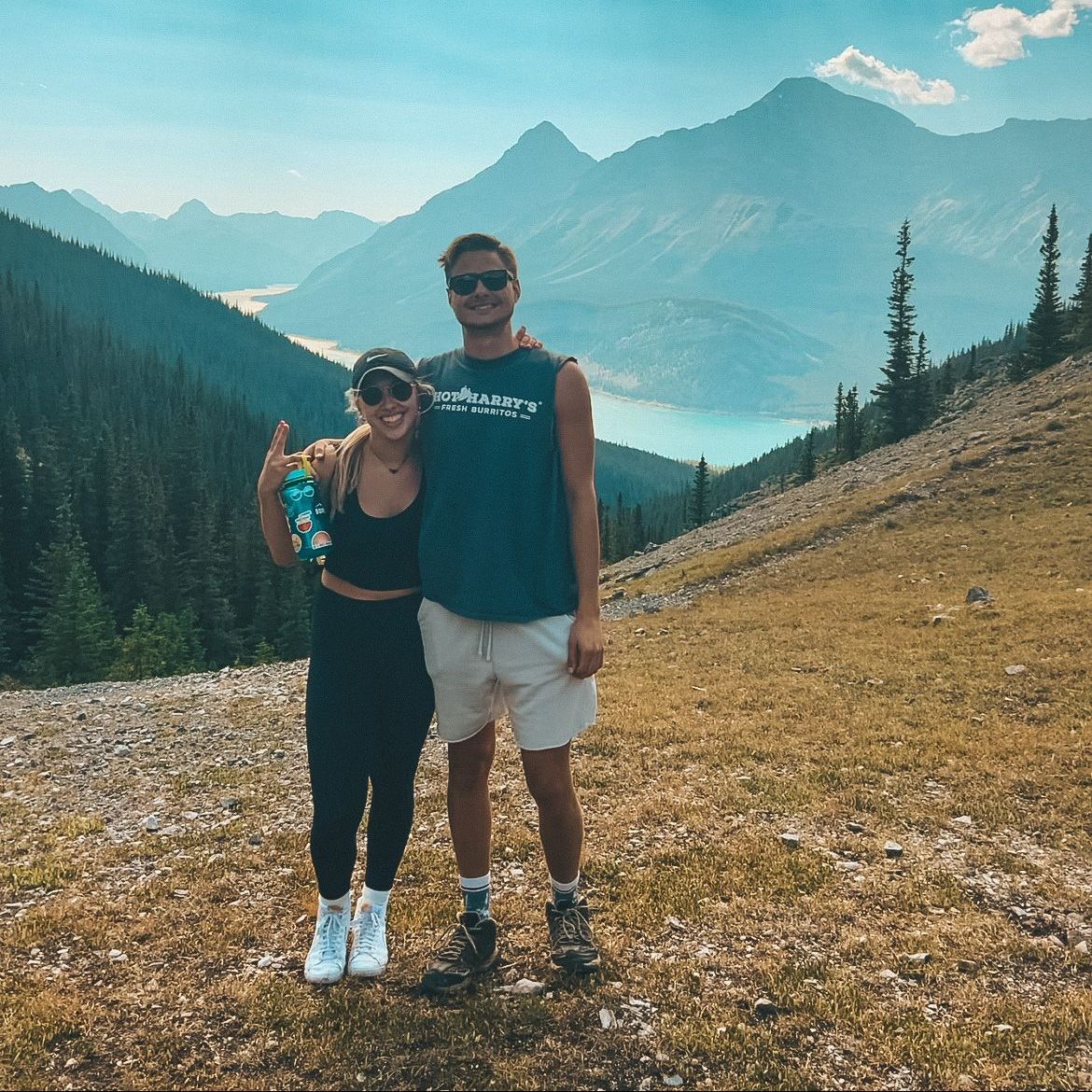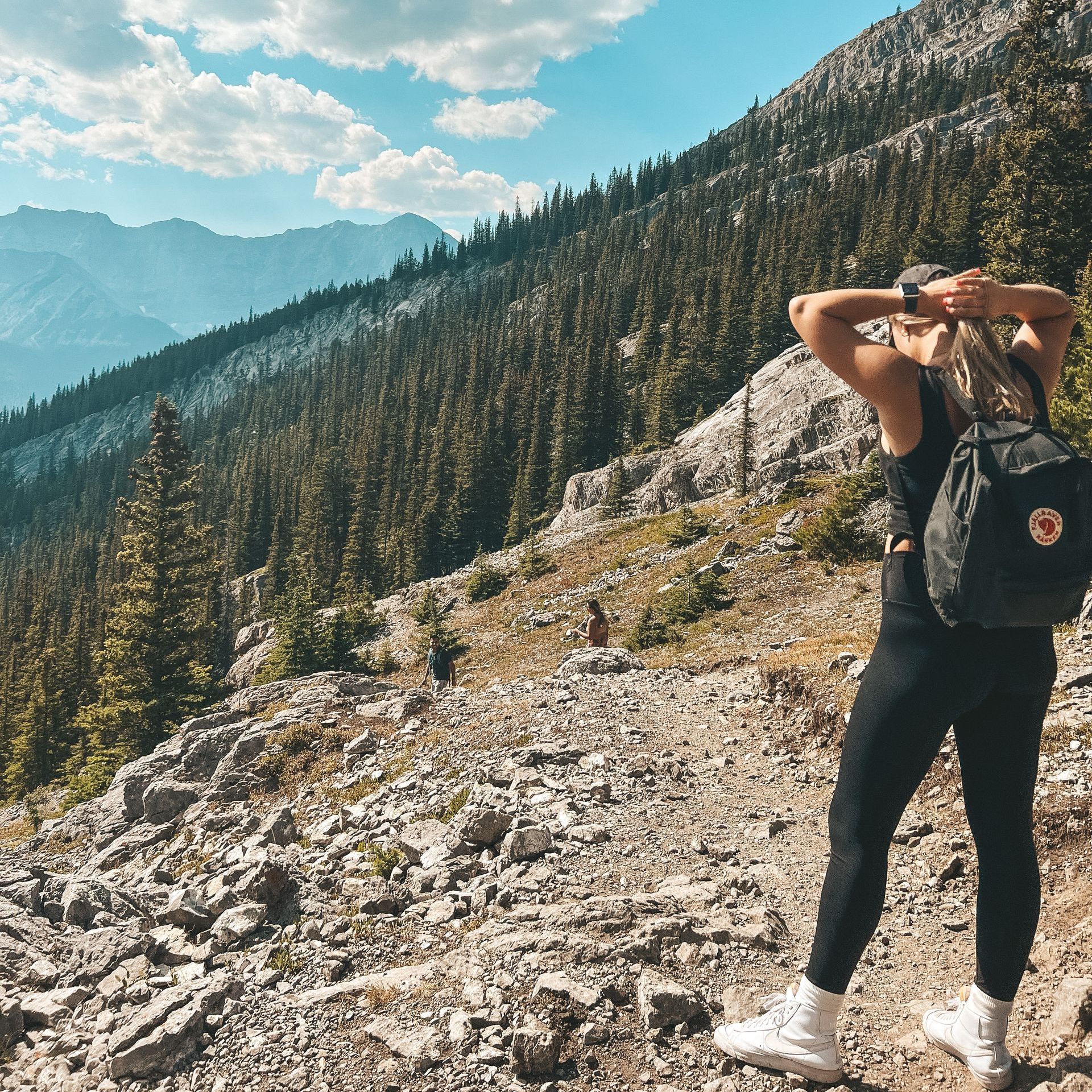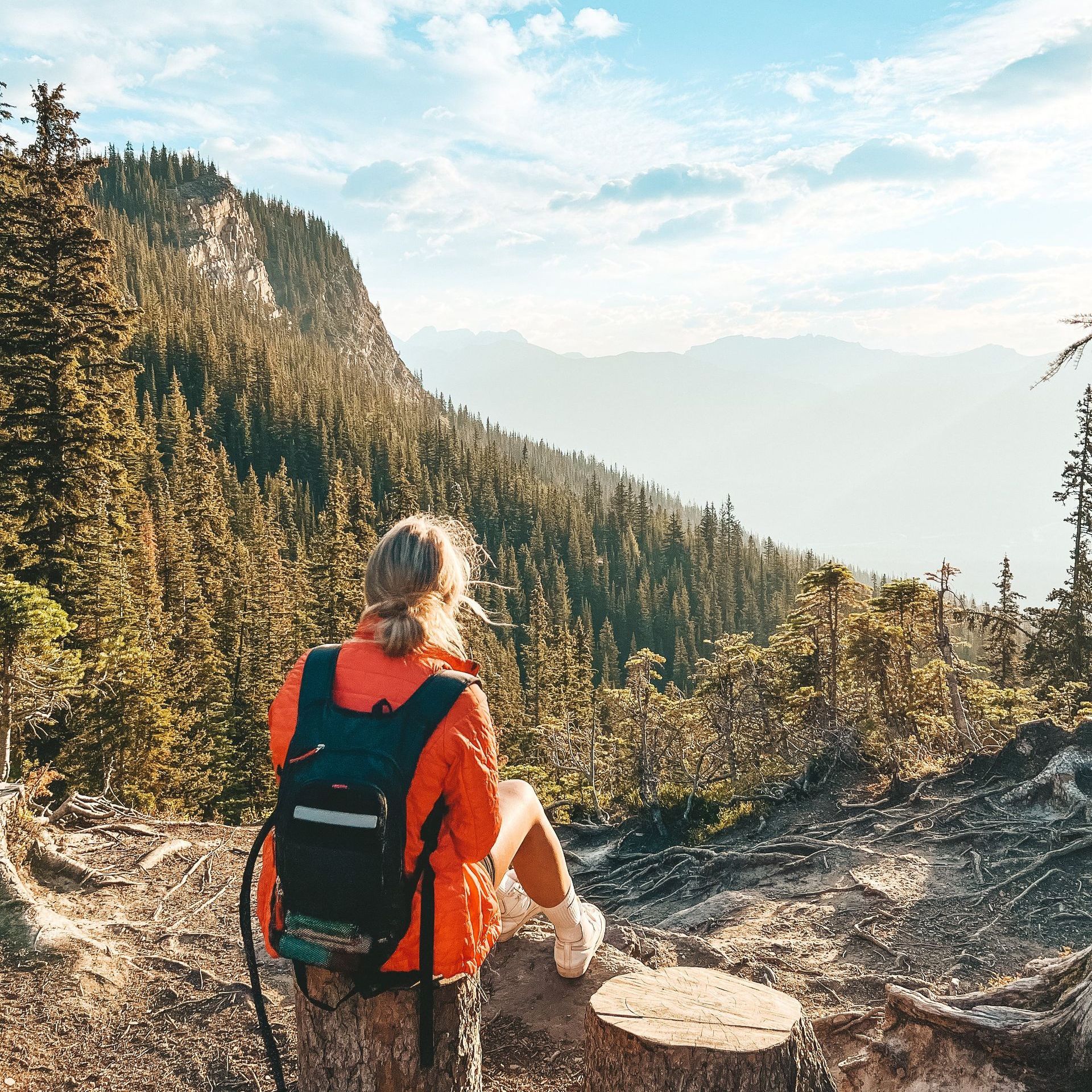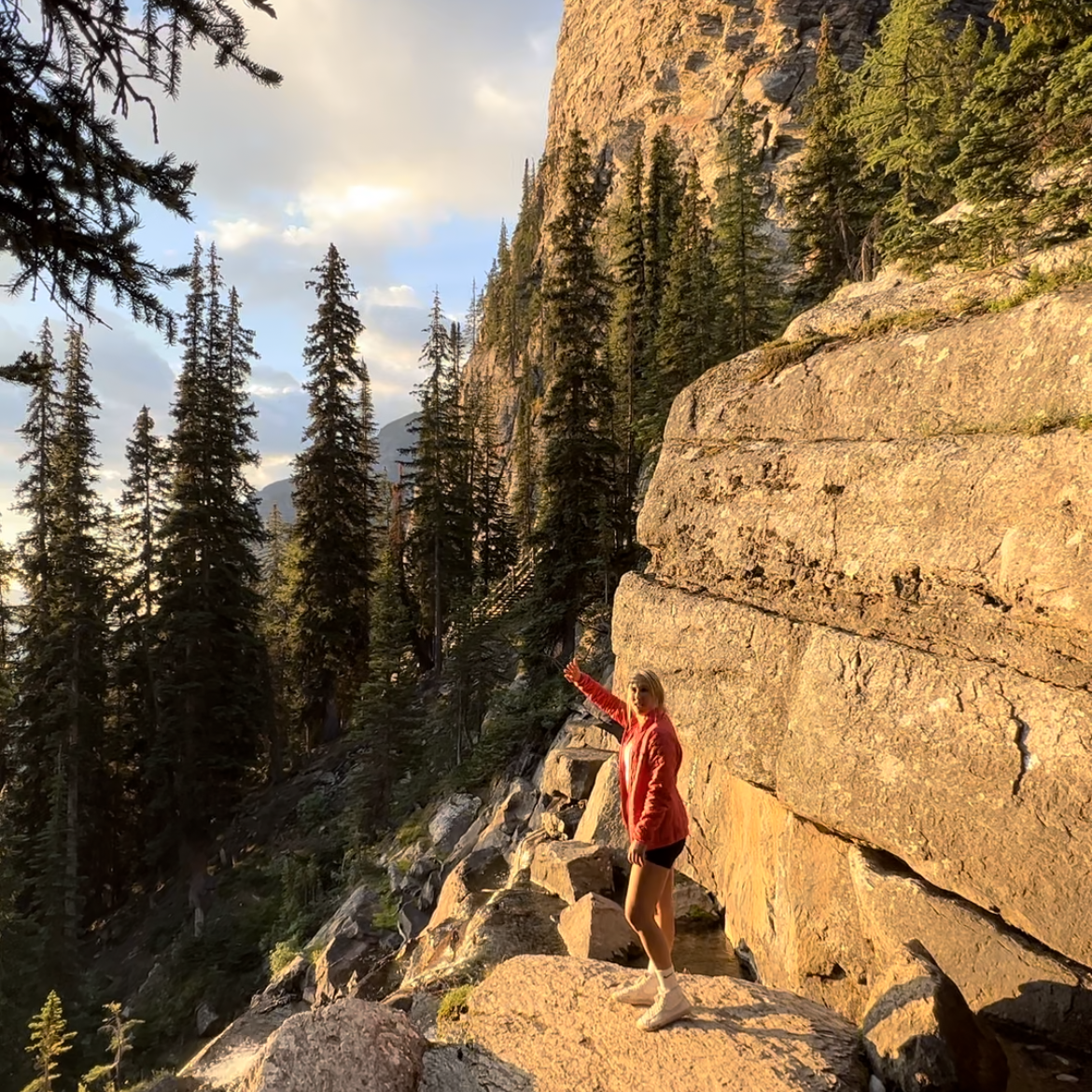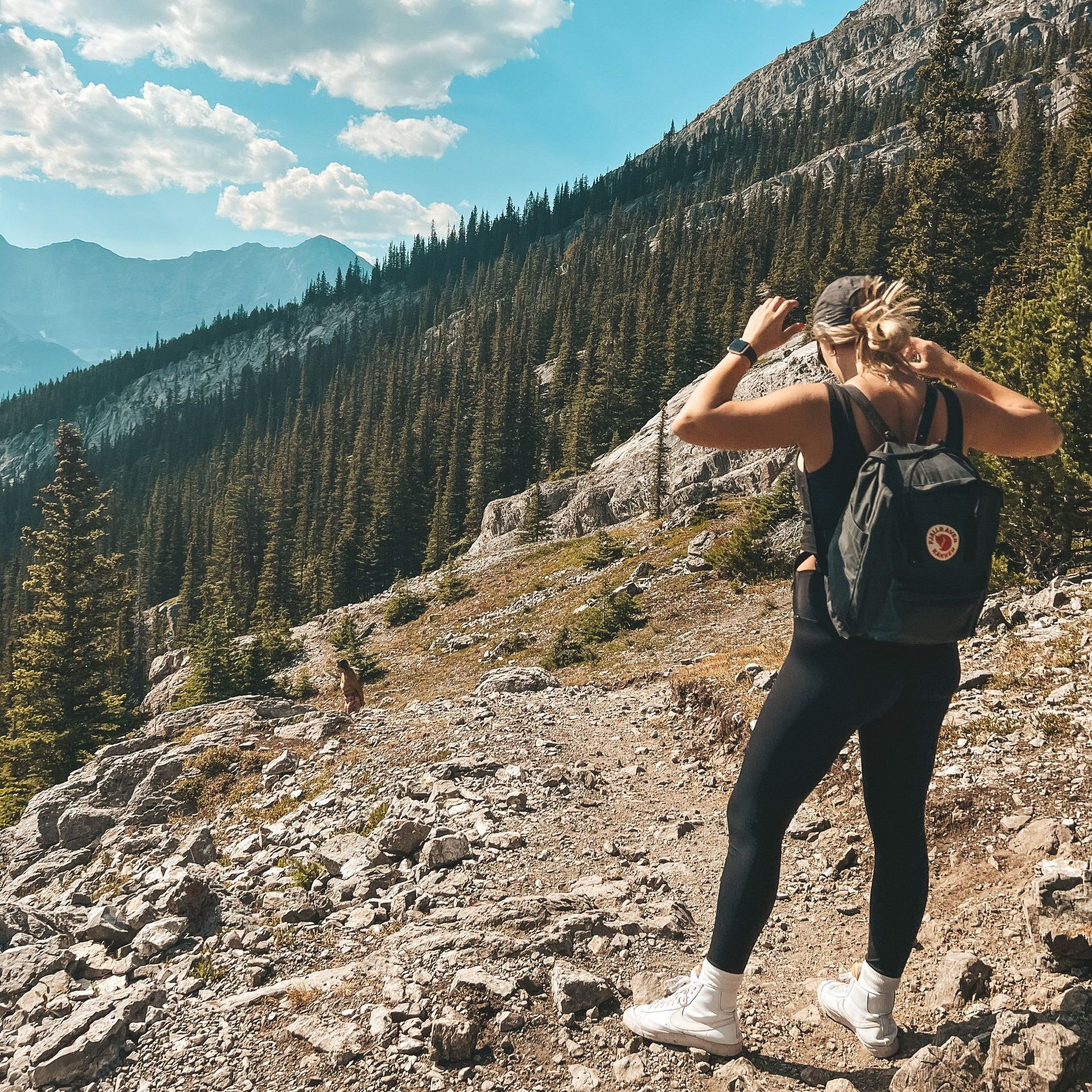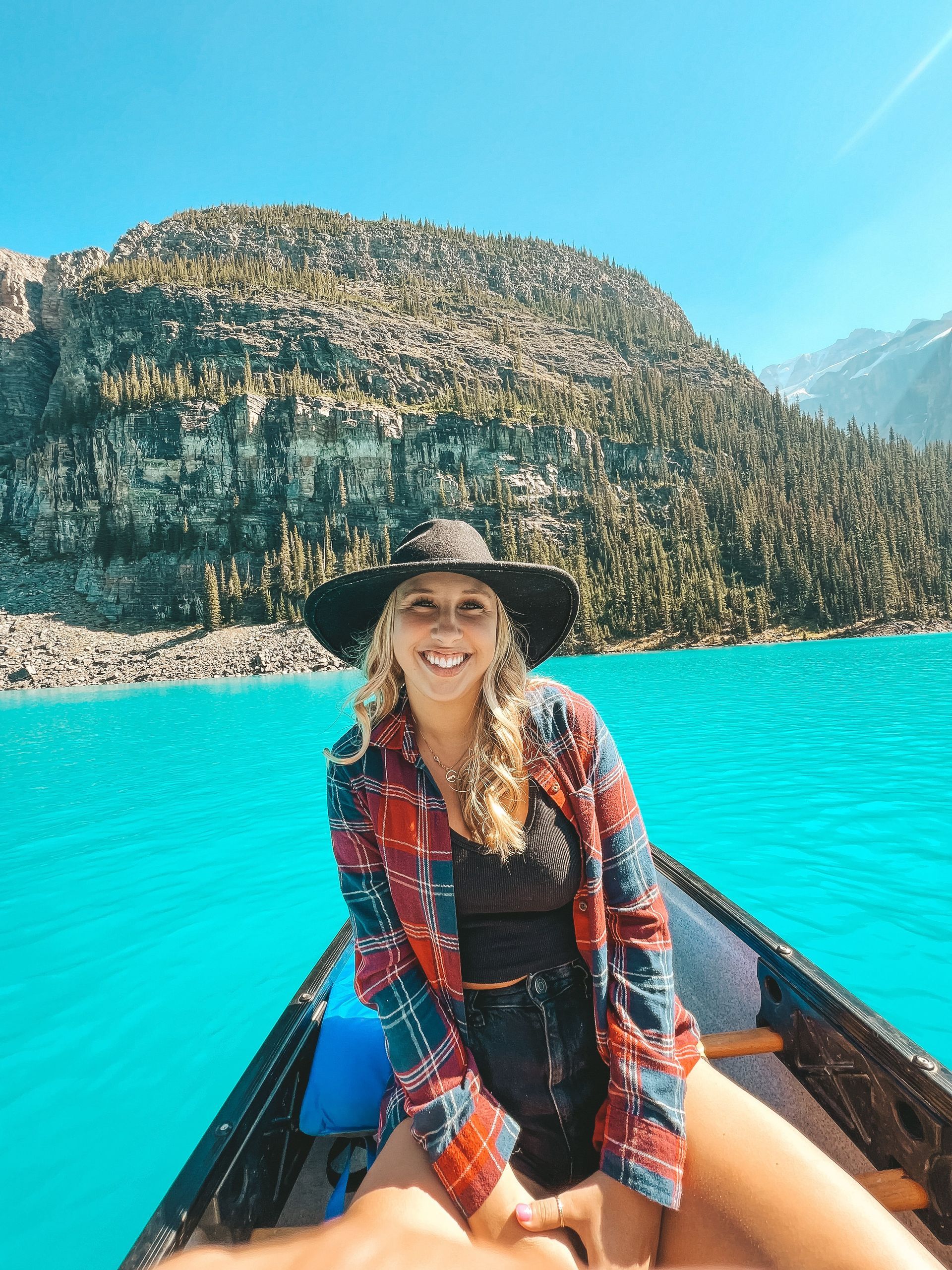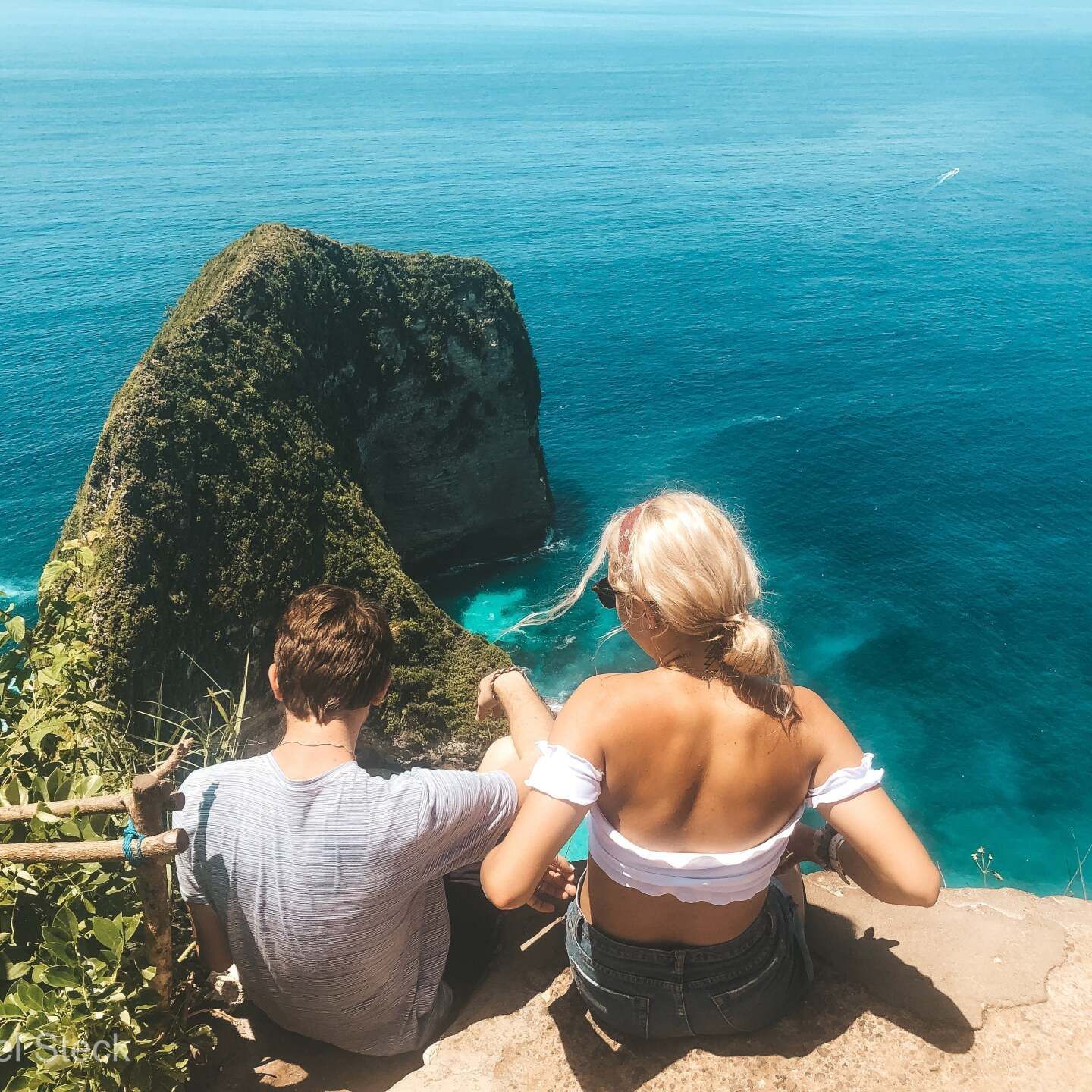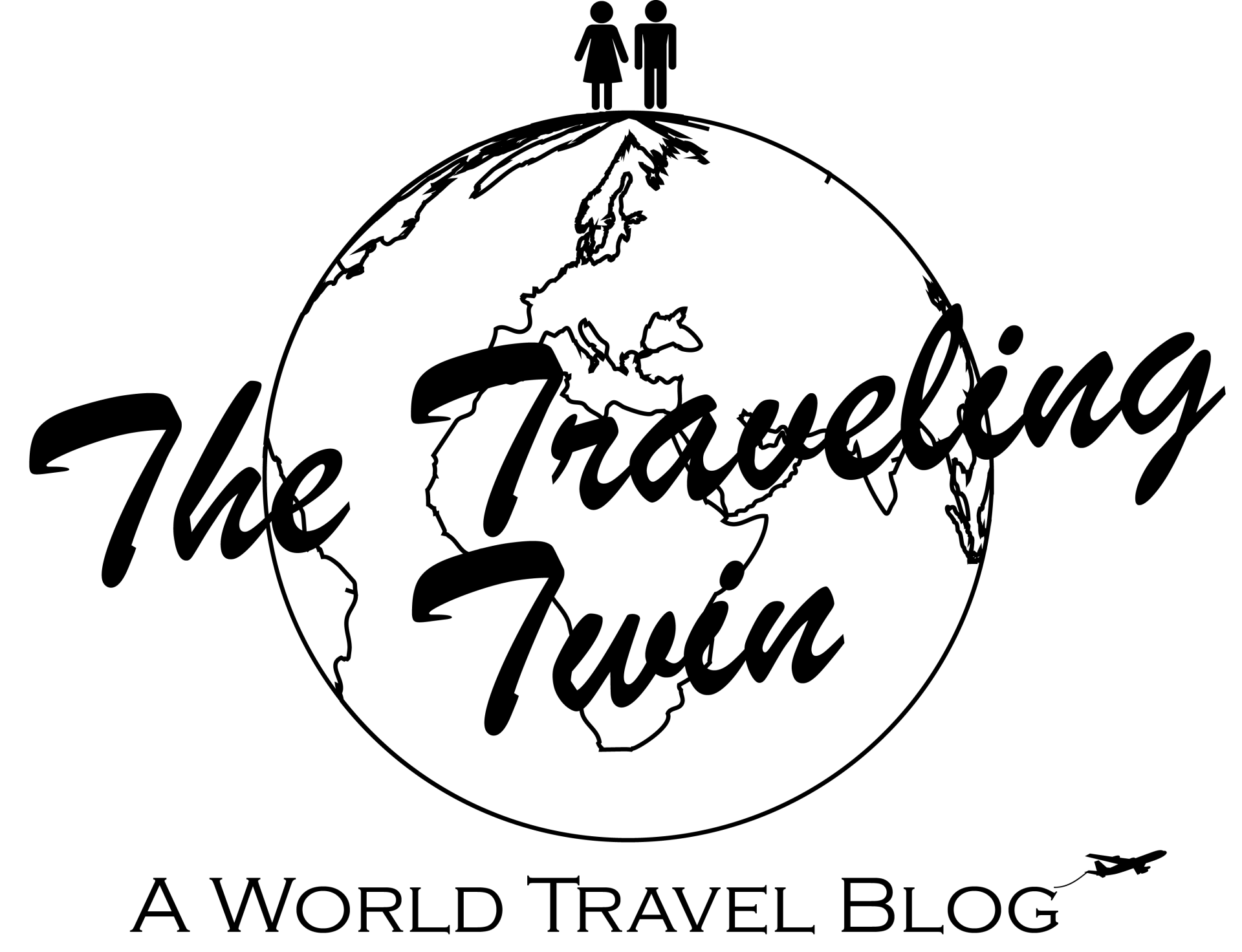The Best Time to Visit Banff National Park
Beautiful Weather, Exceptional Views & Less Crowds in Alberta, CA
experience banff during the best time of the year
Banff National Park is home to some of the most beautiful mountain ranges not only in the country, but in the world. For that reason, it shouldn't be too surprising that this area attracts over 4.5 million people per year. This then begs the question: when is the best time to visit Banff National Park? Is there an even amount of people visiting per month, or are some months busier than others? What is the weather like month-to-month? If you are planning a trip to Banff National Park and looking to travel during the "best" time of the year, read below! To give you the very best answer, I took into consideration both the weather and my own personal experience.
WHERE IS BANFF NATIONAL PARK LOCATED?
Banff National Park is located in the province of Alberta, Canada, which is in the southwestern portion of the country. It is on the western border of British Columbia, and spans across 2,564 square miles. 96% of the park is wilderness, and it is one of four parks that feature the Canadian Rocky Mountain range.
THE AVERAGE TEMPERATURES IN BANFF NATIONAL PARK MONTH-TO-MONTH
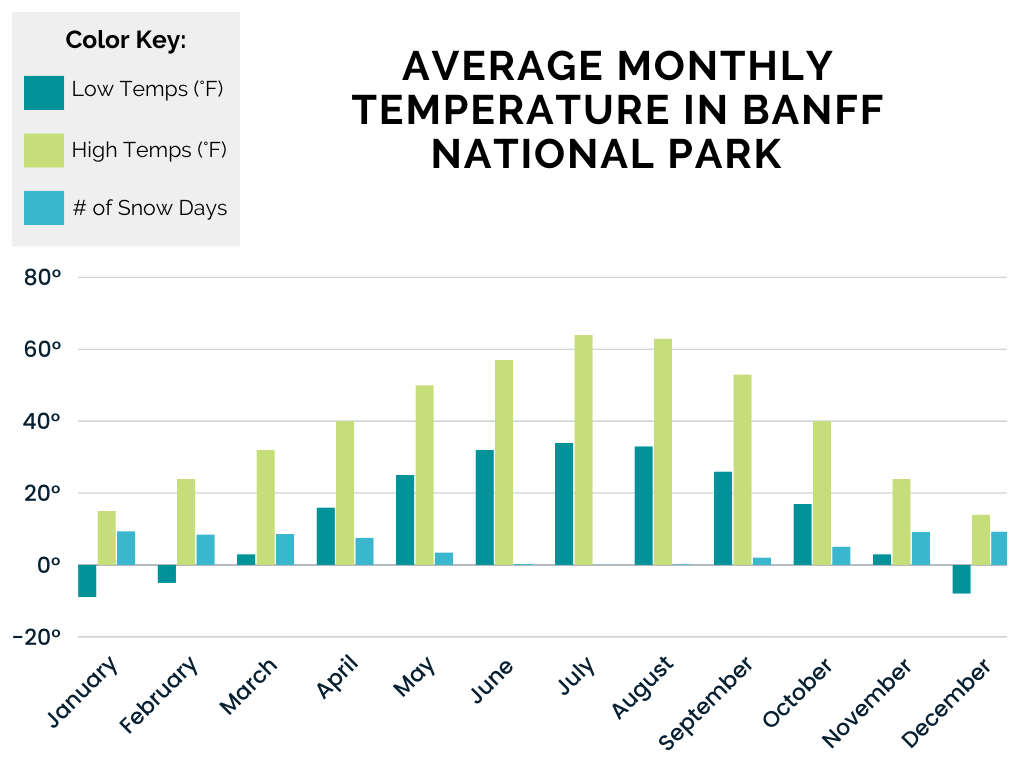
As shown in the graph above, the warmest month to visit Banff National Park is July, which has an average high temperature of 64°F and an average low temperature of 34°F. January and December are the coldest months to visit Banff National Park. They are very close in both average high and low temperatures; January has an average high of 15°F and average low of -9°F while December has an average high of 14°F and average low of -8°F.
THE AVERAGE TEMPERATURES IN BANFF, ALBERTA, CANADA MONTH-TO-MONTH
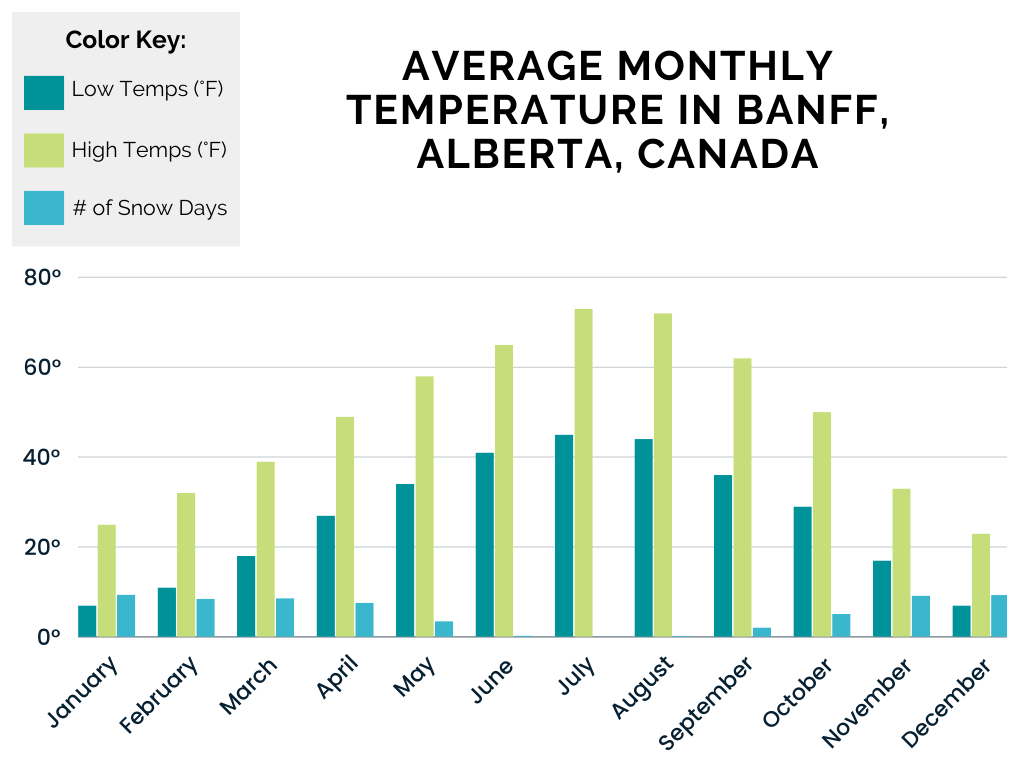
Similar to the first graph, this second graph shows that it is warmest in Banff, Alberta, Canada during July and coldest during January and December. While the weather in Banff National Park and the weather in town of Banff have a similar trend to each other (as depicted in the two graphs), it is apparent that the national park is colder year round compared to whatever the temperature is in the town of Banff at that time. This is something to take into consideration when visiting the national park because if you are planning spending most of your time there, it will be chillier, regardless of the time of year!
THE BEST TIME OF YEAR TO VISIT BANFF NATIONAL PARK
Based on temperature averages, average snowfall, and my own experience, I would say that May, June, September, and early October are the best times to visit Banff National Park. This is because the weather is warmer but not too hot (it doesn't seem to get above 65°F in the park often anyway). There is little to no chance of snowfall during these months, which means it's safer to hike. Oh, and the tea houses on the trail overlooking Lake Louise are open during this time, which is one of my favorite parts!
If you do visit during these times, there is one downside though- the crowds. Since this is the best weather for visiting and hiking in Banff National Park, this is also when there will be the most people. But guess what? There is a way to get around this: GO EARLY. My friends and I visited Banff National Park in late August/early September and we started most of our hikes around 5:00 or 6:00 am every morning. This meant that it was cooler hiking weather, there was lots of parking, and we experienced virtually no crowds in the park except on the way down.
WHAT ARE THE BUSIEST MONTHS IN BANFF NATIONAL PARK?
The busiest months in Banff National Park are June through August. This is because the temperature is warmest and there is little to no chance of snow compared to the other months. This also happens to be the time when a lot of families have time off, and kids have the summer off from school so you will see a lot of families if you visit during these months.
WHAT ARE THE CHEAPEST MONTHS TO VISIT BANFF NATIONAL PARK?
The cheapest months to visit Banff National Park are November, March, April, and early May. This is because there is typically snowfall during these months, which makes hiking in the park a lot harder. Many people are also worried about how safe it is to visit during these months if there is snow, and will opt to visit in the summer months instead so they can safely hike. In addition, a lot of activities that are typically open in the summer, like canoeing, visiting the teahouses, and more are closed during this time. Instead, there are winter activities like snow shoeing, regular and cross-country skiing, dog sledding, and ice skating on Lake Louise and Moraine Lake.
Plan Your Trip to Banff National Park
Regardless of the exact month that you visit Banff National Park, I can almost guarantee you that you will have an amazing time. I've been to Banff National Park in late August/early September and absolutely loved going on all the famous hiking (and some off the beaten path), canoeing Moraine Lake, riding the Banff Gondola to have dinner on the top of a mountain, and exploring both Banff and Canmore. I am also planning a short visit to go snowboarding during the winter time, so I personally believe you should let the activities you want to do dictate the time of year you go! Hikers, swimmers, and canoe/paddleboarders should go during the warmer months and try to start their activities earlier to beat the crowds; skiier/snowboarders, snowshoers, and all-around snow lovers should plan a visit during the colder months. To learn more, hit the subscribe button below!
Your Guide to Hiking the Teahouse Trail
Looking to hike one of the most famous trails in Banff National Park? The Teahouse Trail is THE must-hike trail of your trip, complete with jaw dropping views and not one, but TWO stops to teahouses at the top of the mountain.
Your guide to the
Banff Gondola
Oh...you we're considering SKIPPING the Banff Gondola during your visit to Banff National Park?! I'm sorry to tell you, but that's a mistake. Learn about Banff Gondola and what makes it so special by clicking below.
Subscribe for more on banff national park
Banff National Park is a fantastic place to plan a trip and experience the great outdoors, spend time in nature, and make memories. For more info from The Traveling Twin on Banff in Canada, click below.


